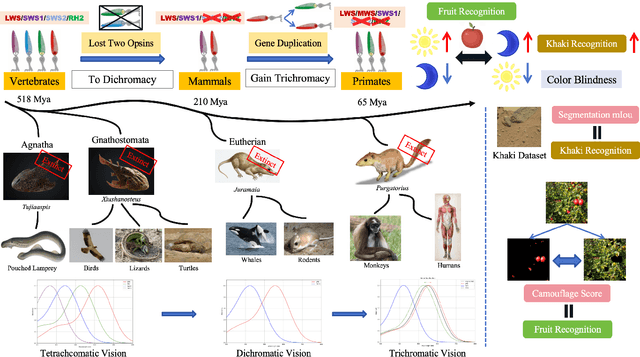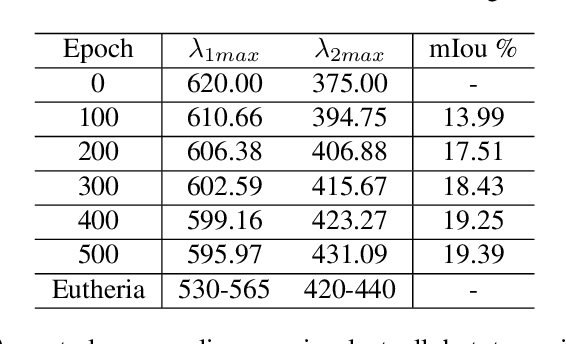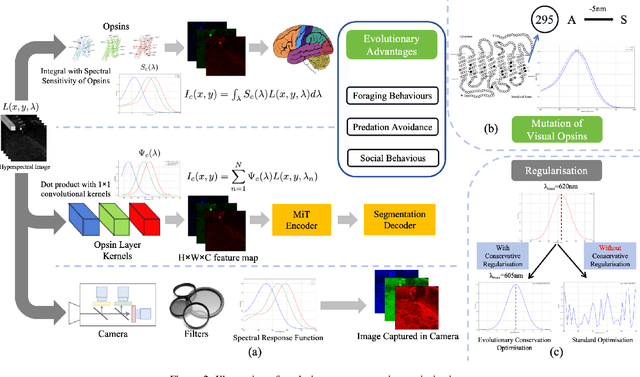Junjie Zhang
STARec: An Efficient Agent Framework for Recommender Systems via Autonomous Deliberate Reasoning
Aug 26, 2025Abstract:While modern recommender systems are instrumental in navigating information abundance, they remain fundamentally limited by static user modeling and reactive decision-making paradigms. Current large language model (LLM)-based agents inherit these shortcomings through their overreliance on heuristic pattern matching, yielding recommendations prone to shallow correlation bias, limited causal inference, and brittleness in sparse-data scenarios. We introduce STARec, a slow-thinking augmented agent framework that endows recommender systems with autonomous deliberative reasoning capabilities. Each user is modeled as an agent with parallel cognitions: fast response for immediate interactions and slow reasoning that performs chain-of-thought rationales. To cultivate intrinsic slow thinking, we develop anchored reinforcement training - a two-stage paradigm combining structured knowledge distillation from advanced reasoning models with preference-aligned reward shaping. This hybrid approach scaffolds agents in acquiring foundational capabilities (preference summarization, rationale generation) while enabling dynamic policy adaptation through simulated feedback loops. Experiments on MovieLens 1M and Amazon CDs benchmarks demonstrate that STARec achieves substantial performance gains compared with state-of-the-art baselines, despite using only 0.4% of the full training data.
SimpleDeepSearcher: Deep Information Seeking via Web-Powered Reasoning Trajectory Synthesis
May 22, 2025



Abstract:Retrieval-augmented generation (RAG) systems have advanced large language models (LLMs) in complex deep search scenarios requiring multi-step reasoning and iterative information retrieval. However, existing approaches face critical limitations that lack high-quality training trajectories or suffer from the distributional mismatches in simulated environments and prohibitive computational costs for real-world deployment. This paper introduces SimpleDeepSearcher, a lightweight yet effective framework that bridges this gap through strategic data engineering rather than complex training paradigms. Our approach synthesizes high-quality training data by simulating realistic user interactions in live web search environments, coupled with a multi-criteria curation strategy that optimizes the diversity and quality of input and output side. Experiments on five benchmarks across diverse domains demonstrate that SFT on only 871 curated samples yields significant improvements over RL-based baselines. Our work establishes SFT as a viable pathway by systematically addressing the data-scarce bottleneck, offering practical insights for efficient deep search systems. Our code is available at https://github.com/RUCAIBox/SimpleDeepSearcher.
Slow Thinking for Sequential Recommendation
Apr 13, 2025Abstract:To develop effective sequential recommender systems, numerous methods have been proposed to model historical user behaviors. Despite the effectiveness, these methods share the same fast thinking paradigm. That is, for making recommendations, these methods typically encodes user historical interactions to obtain user representations and directly match these representations with candidate item representations. However, due to the limited capacity of traditional lightweight recommendation models, this one-step inference paradigm often leads to suboptimal performance. To tackle this issue, we present a novel slow thinking recommendation model, named STREAM-Rec. Our approach is capable of analyzing historical user behavior, generating a multi-step, deliberative reasoning process, and ultimately delivering personalized recommendations. In particular, we focus on two key challenges: (1) identifying the suitable reasoning patterns in recommender systems, and (2) exploring how to effectively stimulate the reasoning capabilities of traditional recommenders. To this end, we introduce a three-stage training framework. In the first stage, the model is pretrained on large-scale user behavior data to learn behavior patterns and capture long-range dependencies. In the second stage, we design an iterative inference algorithm to annotate suitable reasoning traces by progressively refining the model predictions. This annotated data is then used to fine-tune the model. Finally, in the third stage, we apply reinforcement learning to further enhance the model generalization ability. Extensive experiments validate the effectiveness of our proposed method.
Supervised Optimism Correction: Be Confident When LLMs Are Sure
Apr 10, 2025Abstract:In this work, we establish a novel theoretical connection between supervised fine-tuning and offline reinforcement learning under the token-level Markov decision process, revealing that large language models indeed learn an implicit $Q$-function for inference. Through this theoretical lens, we demonstrate that the widely used beam search method suffers from unacceptable over-optimism, where inference errors are inevitably amplified due to inflated $Q$-value estimations of suboptimal steps. To address this limitation, we propose Supervised Optimism Correction(SOC), which introduces a simple yet effective auxiliary loss for token-level $Q$-value estimations during supervised fine-tuning. Specifically, the auxiliary loss employs implicit value regularization to boost model confidence in expert-demonstrated responses, thereby suppressing over-optimism toward insufficiently supervised responses. Extensive experiments on mathematical reasoning benchmarks, including GSM8K, MATH, and GAOKAO, showcase the superiority of the proposed SOC with beam search across a series of open-source models.
Multi-modal Multi-platform Person Re-Identification: Benchmark and Method
Mar 21, 2025Abstract:Conventional person re-identification (ReID) research is often limited to single-modality sensor data from static cameras, which fails to address the complexities of real-world scenarios where multi-modal signals are increasingly prevalent. For instance, consider an urban ReID system integrating stationary RGB cameras, nighttime infrared sensors, and UAVs equipped with dynamic tracking capabilities. Such systems face significant challenges due to variations in camera perspectives, lighting conditions, and sensor modalities, hindering effective person ReID. To address these challenges, we introduce the MP-ReID benchmark, a novel dataset designed specifically for multi-modality and multi-platform ReID. This benchmark uniquely compiles data from 1,930 identities across diverse modalities, including RGB, infrared, and thermal imaging, captured by both UAVs and ground-based cameras in indoor and outdoor environments. Building on this benchmark, we introduce Uni-Prompt ReID, a framework with specific-designed prompts, tailored for cross-modality and cross-platform scenarios. Our method consistently outperforms state-of-the-art approaches, establishing a robust foundation for future research in complex and dynamic ReID environments. Our dataset are available at:https://mp-reid.github.io/.
UniArray: Unified Spectral-Spatial Modeling for Array-Geometry-Agnostic Speech Separation
Mar 07, 2025

Abstract:Array-geometry-agnostic speech separation (AGA-SS) aims to develop an effective separation method regardless of the microphone array geometry. Conventional methods rely on permutation-free operations, such as summation or attention mechanisms, to capture spatial information. However, these approaches often incur high computational costs or disrupt the effective use of spatial information during intra- and inter-channel interactions, leading to suboptimal performance. To address these issues, we propose UniArray, a novel approach that abandons the conventional interleaving manner. UniArray consists of three key components: a virtual microphone estimation (VME) module, a feature extraction and fusion module, and a hierarchical dual-path separator. The VME ensures robust performance across arrays with varying channel numbers. The feature extraction and fusion module leverages a spectral feature extraction module and a spatial dictionary learning (SDL) module to extract and fuse frequency-bin-level features, allowing the separator to focus on using the fused features. The hierarchical dual-path separator models feature dependencies along the time and frequency axes while maintaining computational efficiency. Experimental results show that UniArray outperforms state-of-the-art methods in SI-SDRi, WB-PESQ, NB-PESQ, and STOI across both seen and unseen array geometries.
Paleoinspired Vision: From Exploring Colour Vision Evolution to Inspiring Camera Design
Dec 27, 2024



Abstract:The evolution of colour vision is captivating, as it reveals the adaptive strategies of extinct species while simultaneously inspiring innovations in modern imaging technology. In this study, we present a simplified model of visual transduction in the retina, introducing a novel opsin layer. We quantify evolutionary pressures by measuring machine vision recognition accuracy on colour images shaped by specific opsins. Building on this, we develop an evolutionary conservation optimisation algorithm to reconstruct the spectral sensitivity of opsins, enabling mutation-driven adaptations to to more effectively spot fruits or predators. This model condenses millions of years of evolution within seconds on GPU, providing an experimental framework to test long-standing hypotheses in evolutionary biology , such as vision of early mammals, primate trichromacy from gene duplication, retention of colour blindness, blue-shift of fish rod and multiple rod opsins with bioluminescence. Moreover, the model enables speculative explorations of hypothetical species, such as organisms with eyes adapted to the conditions on Mars. Our findings suggest a minimalist yet effective approach to task-specific camera filter design, optimising the spectral response function to meet application-driven demands. The code will be made publicly available upon acceptance.
Fine-Grained Urban Flow Inference with Multi-scale Representation Learning
Jun 14, 2024Abstract:Fine-grained urban flow inference (FUFI) is a crucial transportation service aimed at improving traffic efficiency and safety. FUFI can infer fine-grained urban traffic flows based solely on observed coarse-grained data. However, most of existing methods focus on the influence of single-scale static geographic information on FUFI, neglecting the interactions and dynamic information between different-scale regions within the city. Different-scale geographical features can capture redundant information from the same spatial areas. In order to effectively learn multi-scale information across time and space, we propose an effective fine-grained urban flow inference model called UrbanMSR, which uses self-supervised contrastive learning to obtain dynamic multi-scale representations of neighborhood-level and city-level geographic information, and fuses multi-scale representations to improve fine-grained accuracy. The fusion of multi-scale representations enhances fine-grained. We validate the performance through extensive experiments on three real-world datasets. The resutls compared with state-of-the-art methods demonstrate the superiority of the proposed model.
SAM-E: Leveraging Visual Foundation Model with Sequence Imitation for Embodied Manipulation
May 30, 2024



Abstract:Acquiring a multi-task imitation policy in 3D manipulation poses challenges in terms of scene understanding and action prediction. Current methods employ both 3D representation and multi-view 2D representation to predict the poses of the robot's end-effector. However, they still require a considerable amount of high-quality robot trajectories, and suffer from limited generalization in unseen tasks and inefficient execution in long-horizon reasoning. In this paper, we propose SAM-E, a novel architecture for robot manipulation by leveraging a vision-foundation model for generalizable scene understanding and sequence imitation for long-term action reasoning. Specifically, we adopt Segment Anything (SAM) pre-trained on a huge number of images and promptable masks as the foundation model for extracting task-relevant features, and employ parameter-efficient fine-tuning on robot data for a better understanding of embodied scenarios. To address long-horizon reasoning, we develop a novel multi-channel heatmap that enables the prediction of the action sequence in a single pass, notably enhancing execution efficiency. Experimental results from various instruction-following tasks demonstrate that SAM-E achieves superior performance with higher execution efficiency compared to the baselines, and also significantly improves generalization in few-shot adaptation to new tasks.
Pseudo-Prompt Generating in Pre-trained Vision-Language Models for Multi-Label Medical Image Classification
May 10, 2024



Abstract:The task of medical image recognition is notably complicated by the presence of varied and multiple pathological indications, presenting a unique challenge in multi-label classification with unseen labels. This complexity underlines the need for computer-aided diagnosis methods employing multi-label zero-shot learning. Recent advancements in pre-trained vision-language models (VLMs) have showcased notable zero-shot classification abilities on medical images. However, these methods have limitations on leveraging extensive pre-trained knowledge from broader image datasets, and often depend on manual prompt construction by expert radiologists. By automating the process of prompt tuning, prompt learning techniques have emerged as an efficient way to adapt VLMs to downstream tasks. Yet, existing CoOp-based strategies fall short in performing class-specific prompts on unseen categories, limiting generalizability in fine-grained scenarios. To overcome these constraints, we introduce a novel prompt generation approach inspirited by text generation in natural language processing (NLP). Our method, named Pseudo-Prompt Generating (PsPG), capitalizes on the priori knowledge of multi-modal features. Featuring a RNN-based decoder, PsPG autoregressively generates class-tailored embedding vectors, i.e., pseudo-prompts. Comparative evaluations on various multi-label chest radiograph datasets affirm the superiority of our approach against leading medical vision-language and multi-label prompt learning methods. The source code is available at https://github.com/fallingnight/PsPG
 Add to Chrome
Add to Chrome Add to Firefox
Add to Firefox Add to Edge
Add to Edge